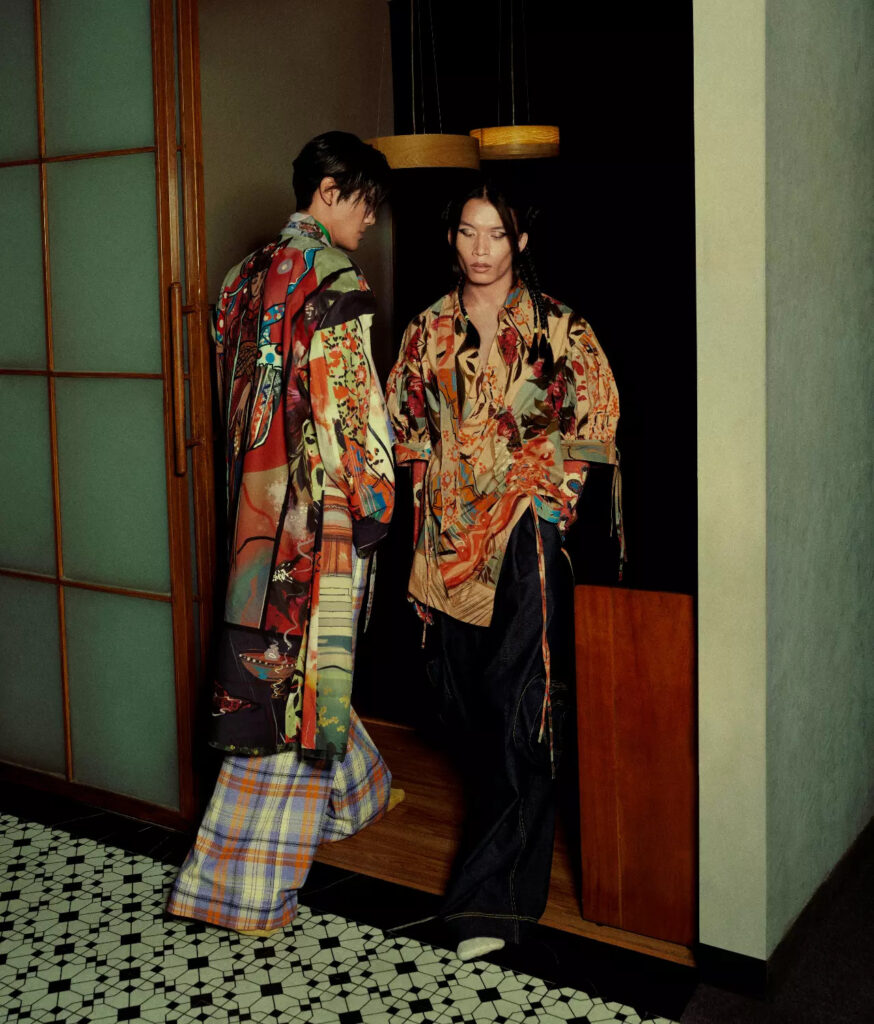Fashion has the power to change the world and it is a true reflection of our society. There are very few designers in India who are not just bringing in avant-garde designs on the table but also kickstarting meaningful conversations. Designer Anvita Sharma’s label Two Point Two has become an eponymous brand when it comes to gender neutral clothing. She is among the pioneers in India who began to design androgynous clothes and blurred the gender lines. Sharma’s work has not only helped many from the queer community to express themselves in the most stylish way but also helped cisgender men and women to explore fashion in its many forms. We speak to the designer and ask her how she brought about that change in Indian fashion with her designs.
1. How would you define queer style in India?
Anvita Sharma: I feel that the queer community is much more flamboyant in their expression in terms of fashion. They are more free and open to taking chances when it comes to colors and silhouettes. It is always fun to dress someone up who is more enthusiastic about experimentation and taking risks.

2. What made you start a gender neutral brand? Did you have second thoughts on trying something else before you started the label?
Anvita Sharma: While I was studying fashion, I always used to question the categorization that we have in clothing. I personally shop from the men’s wear section quite a lot, so I couldn’t understand why there was a separation especially in 2017 where the binary definition of genders had already started blurring. For me, gender roles have always been a societal construct and things like clothes shouldn’t belong to any one particular box of gender identity. Individuals should be allowed to wear what they want to wear and be comfortable in their own skin without any judgment of which category the clothes come from. With the brand, I’ve tried to remove the difference between masculinity and femininity in clothing and try to form a balance for people who want unique clothes, irrespective of which categorization of men’s wear or women’s wear it falls into. Due to this desire and necessity to break the status quo and the pre-defined gender roles of society, I always envisioned Two Point Two as a genderless brand. Surprisingly, I actually studied economics and finance before I got into fashion. Even after four years of studying in a different field, I never felt misplaced or had any second thoughts about what I was destined to do.
3. Are Indian cisgender men more ready to experiment now and not scared of being labeled?
Anvita Sharma: Yes, definitely, in recent years cisgender men have become more open to experimentation and less strict about the codes and rules of what society has defined masculinity and men’s wear to be like. Apart from the general trajectory of society’s growth, I feel that media has played a big role in this transition where idols like actors, entrepreneurs, and businessmen have come forward with their own experimental image, leading for the masses to follow.

4. Where do you think queer fashion is heading in our country?
Anvita Sharma: I am very grateful and lucky to be part of a movement that started relatively recently in our society regarding openness and acceptability for the queer community. And of course, this has led to more openness in terms of fashion and identity expression for the queer community in India. There is still a long way to go, but I hope that the future allows everyone in the queer community to be more true to themselves and to be able to wear whatever they want without any negative consequences, irrespective of which category the garment belongs to.
5. Name a few designers whose work you admire.
Anvita Sharma: That is a long list, but my all-time favorite is Yohji Yamamoto and Rajesh Pratap Singh. Their craftsmanship and runway shows are truly a spectacle to be admired.
6. What are the new things that you are planning for your label in the years to come?
Anvita Sharma: We are experimenting with different fabrics that we haven’t worked with in the past, including sustainable handloom textiles of India. We plan to combine them with western silhouettes and aesthetics. We are also planning to debut in the American and European markets soon. We are hoping for the best.
